How green does your garden grow?
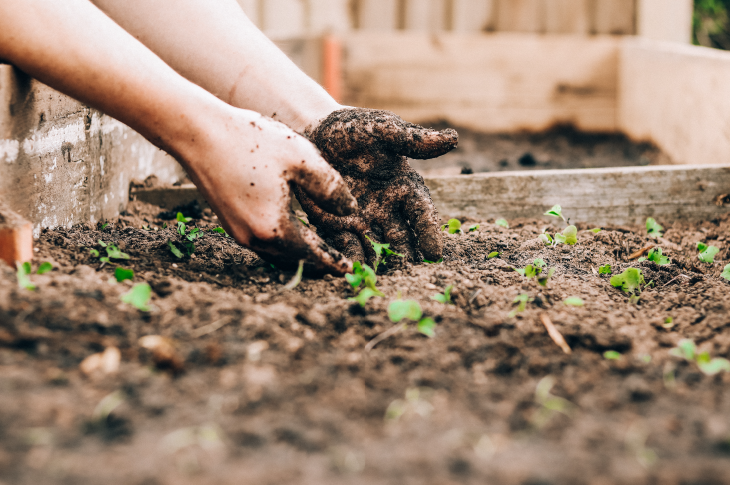
Put on your shades and grab a spade — it’s officially gardening season in Alberta.
You might be eager to get those seeds in the ground, but a little planning can go a long way in making your outdoor space more eco-friendly.
When it comes to creating “greener” yards, Hayley Puppato — project coordinator with SAIT’s Green Building Technologies — is very passionate about effectively managing water while providing a beautiful space that promotes pollinators and enhances the native ecosystem. Working with homeowners Joleen and Gerton Molenaar, Puppato helped design the landscaping and urban agricultural plans for “The Confluence,” an award-winning home in southern Alberta set to become one of the most environmentally friendly in the world.
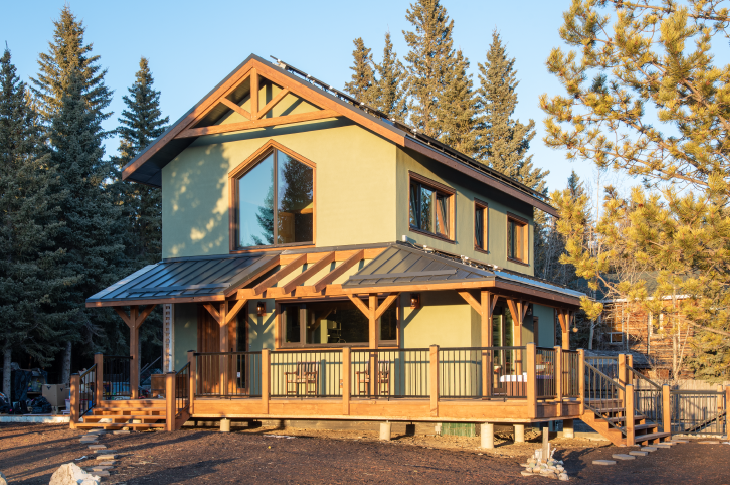
We’re building one of the greenest homes on earth
What does it take to meet the standards of the world’s most rigorous green building rating program? Take a tour of “The Confluence” and discover what makes this home unlike any other.
Luckily, you don’t have to live in one of the world’s most sustainable homes to start creating a sustainable yard. Check out Puppato’s tips for building an outdoor space you can feel good about nurturing over the coming months.
Plant more native and naturalized species
While planting an exotic species you’ve never seen before might seem like a good idea, native and naturalized plants are your best bet for keeping your gardening efforts more environmentally friendly.
Native plants (such as wild bergamot and black-eyed Susans in Alberta) are indigenous to an area, meaning they haven’t been introduced by human intervention.
Naturalized plants, on the other hand, are non-native species introduced to an area that have the ability to adapt to the foreign environment and reproduce — without becoming invasive. Bleeding hearts (a deer-resistant species originally from Japan) and the common peony (grown for centuries in China) are examples of naturalized species in Alberta.
Both native and naturalized species offer benefits over exotic plants: they require less water and nutrients to thrive, supply habitat and food for local and migratory birds, and support beneficial insects.
Get started by determining your plant hardiness zone to ensure the species you choose will thrive. Then check out the native and naturalized plants listed in your area — the Government of Canada, Canadian Wildlife Federation and CanPlant offer great search tools and lists.
Want to know which invasive species to avoid? Refer to a handy list from Nature Conservancy Canada.
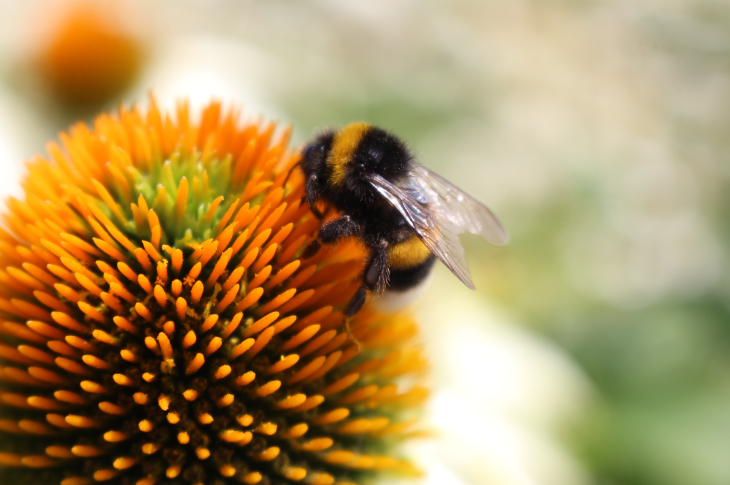
Bee smart about your selection
Pollinators, such as bees, birds and butterflies, are an important part of sustaining healthy and biodiverse ecosystems that produce food, clean the air and support wildlife. Enter your postal code for help selecting plants that support pollinators in your area.
Did you know? Under the care of the SAIT Beekeeping Club and School of Hospitality and Tourism instructors, nearly 60,000 bees can be found in three hives on the rooftop of the John Ware building.
Grow your groceries
Did you know global food production is responsible for one quarter of the world’s greenhouse gas emissions?
Growing your own food is by no means a new concept, but it’s an easy way to reduce your environmental footprint. And, as Puppato points out, now’s as good a time as any to get started.
“Since the pandemic, people have started to realize the limitations of our supply chain and more people are looking to become self-reliant,” says Puppato. “This includes security and resiliency in everything from energy and water to food.”
To address food security, plans for “The Confluence” include a combination of greenhouses, raised beds and rain gardens (we’ll get to these later) to grow a range of edible and medicinal plants, from gooseberries and rhubarb to kohlrabi and zucchini.
Ditch harmful pesticides
You don’t need petrochemical-based pesticides to deter deer and birds — sprinkling garlic powder around the plants and covering them with netting have proven effective. To get rid of aphids, try spraying the leaves with cold water, and for slugs, try encircling your plants with wood ash or ground coffee beans.
“You can even purchase ladybugs and release them into your garden to help with certain pests,” says Puppato.
To mitigate pest problems right out the gate, stick to growing native species — they’ll attract fewer pests than exotic plants.
Dawn of the new lawn
Though common, classic green lawns are not necessarily environmentally-friendly.
They eat up a ton of valuable biodiverse real estate, require regular mowing which may emit greenhouse gases, and need lots of water and fertilizer. An accumulation of fertilizers in lawns, golf courses, parks and other green spaces can lead to algal bloom — an excess of nutrients in the water which can then cause other plants to die, triggering more negative impacts to the ecosystem.
Xeriscaping refers to designing a landscape that requires little to no irrigation. Reduce water use by transforming your lawn into a combination of native plants and mulch or even a rock garden.
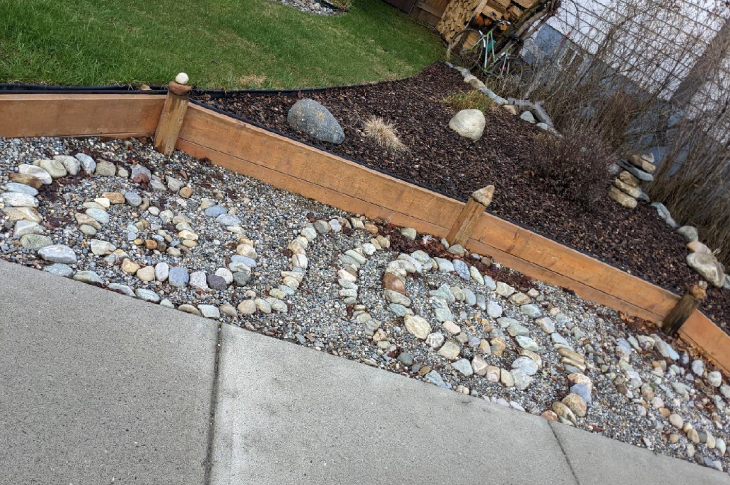
If you do want to stick with a traditional lawn, opt for native grass seed instead of exotic alternatives like Kentucky bluegrass. Native seed requires less water, enhances soil conditions and supports the local ecosystem.
The septic field at “The Confluence” is no average lawn — it’s covered with poppies, wildflowers and native grass mix, including alpine bluegrass and northern wheatgrass.
Dig into permaculture
Permaculture is all about creating “agriculturally productive systems which have the diversity, stability and resilience of natural ecosystems.”
A number of gardening practices — such as rain gardens — fall within this holistic approach, offering clever and beautiful landscaping solutions.
“Rain gardens are strategically-placed gardens used to capture stormwater runoff from surfaces like driveways and filter it back into aquifers, which helps avoid overwhelming stormwater systems,” says Puppato.
To build your own, use native plants and layer them based on plant type and water need. For example, water-loving plants should go where the most water is expected to collect, whereas drought-resistant plants should be situated in the dryer areas.
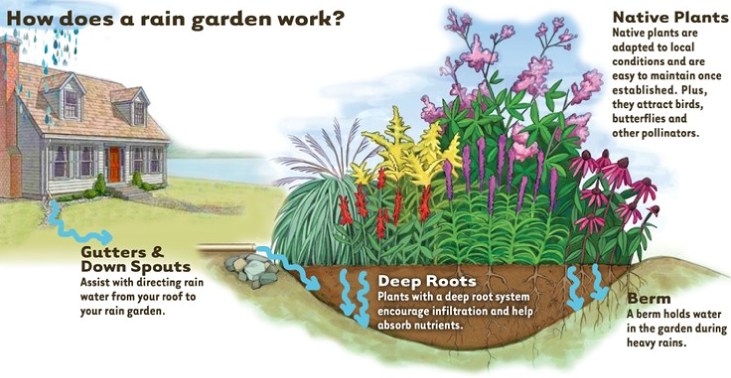
Image courtesy of London Middlesex Master Gardeners.
If you want to try something similar but on a smaller scale, opt for an herb spiral — a spiral-shaped inclining mound of soil planted with drought-resistant (thyme, rosemary) and water-loving (mint, parsley) herbs.
Green thumbs, unite!
Ready to go green? Puppato and the entire GBT team are eager to research and create innovative projects that support building a greener world. Learn more about what they do, follow them on Twitter and get connected.
Be sure to check out “The Confluence” for the ultimate enviro-inspo.

Oki, Âba wathtech, Danit'ada, Tawnshi, Hello.
SAIT is located on the traditional territories of the Niitsitapi (Blackfoot) and the people of Treaty 7 which includes the Siksika, the Piikani, the Kainai, the Tsuut’ina and the Îyârhe Nakoda of Bearspaw, Chiniki and Goodstoney.
We are situated in an area the Blackfoot tribes traditionally called Moh’kinsstis, where the Bow River meets the Elbow River. We now call it the city of Calgary, which is also home to the Métis Nation of Alberta.